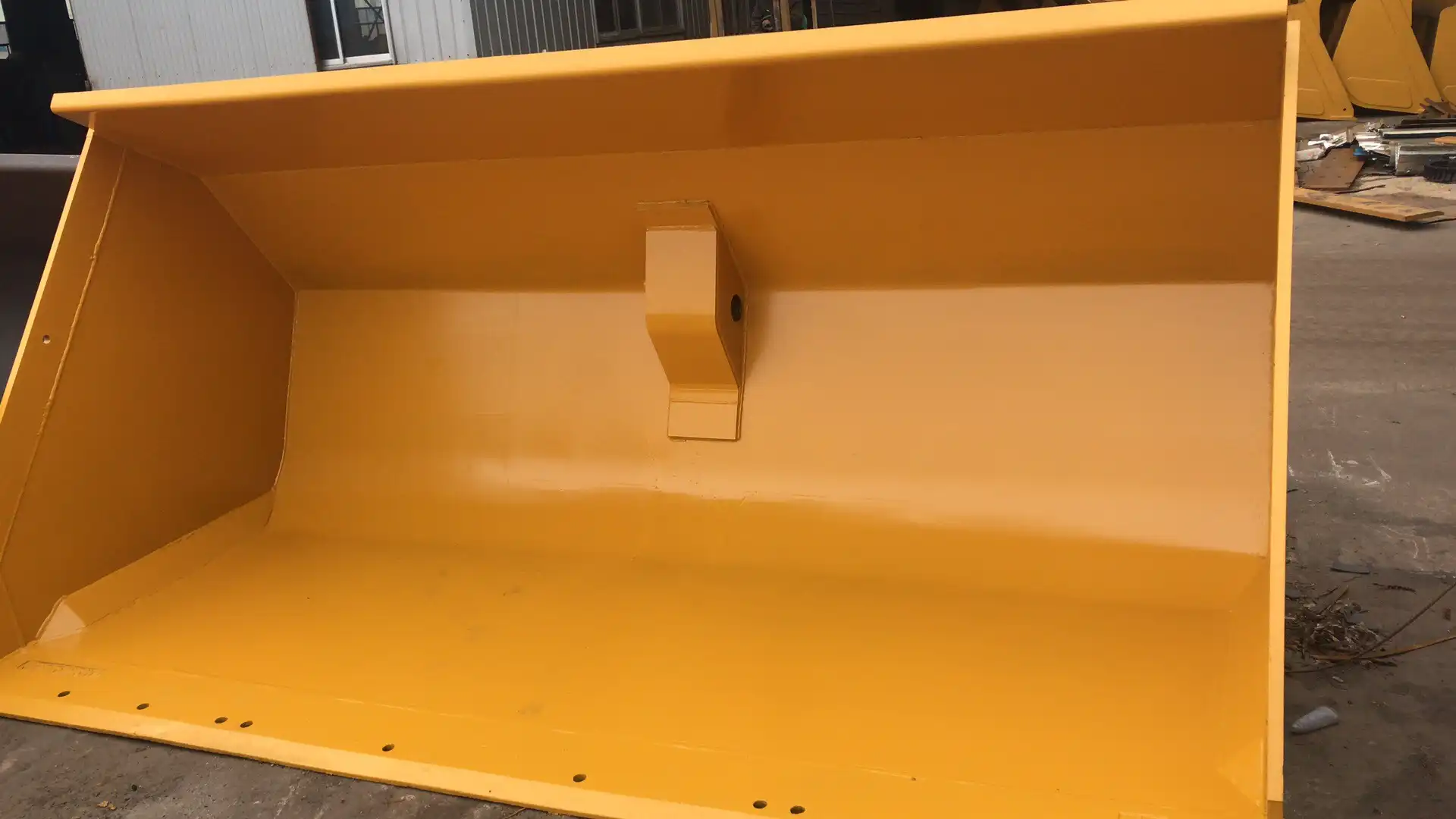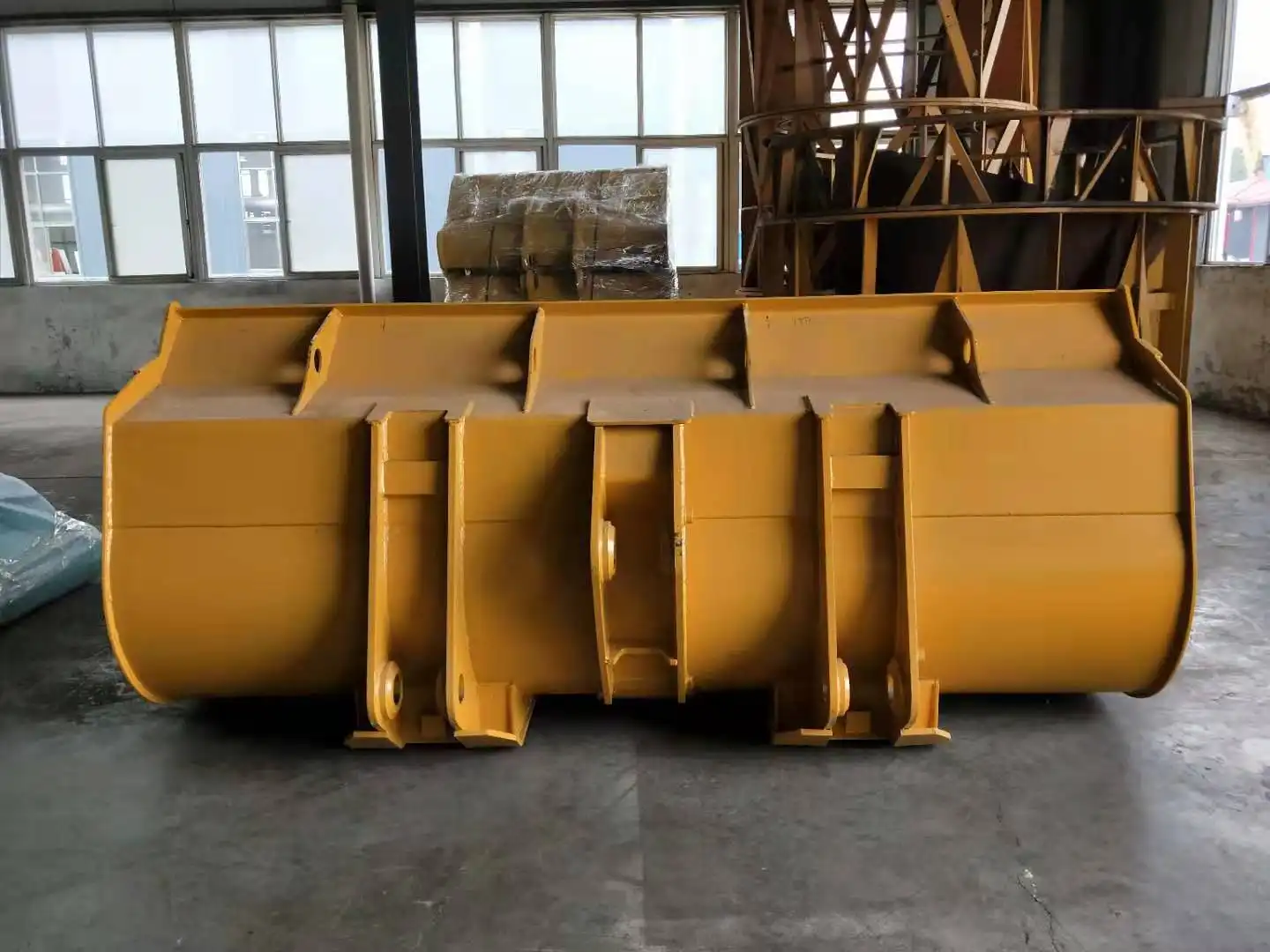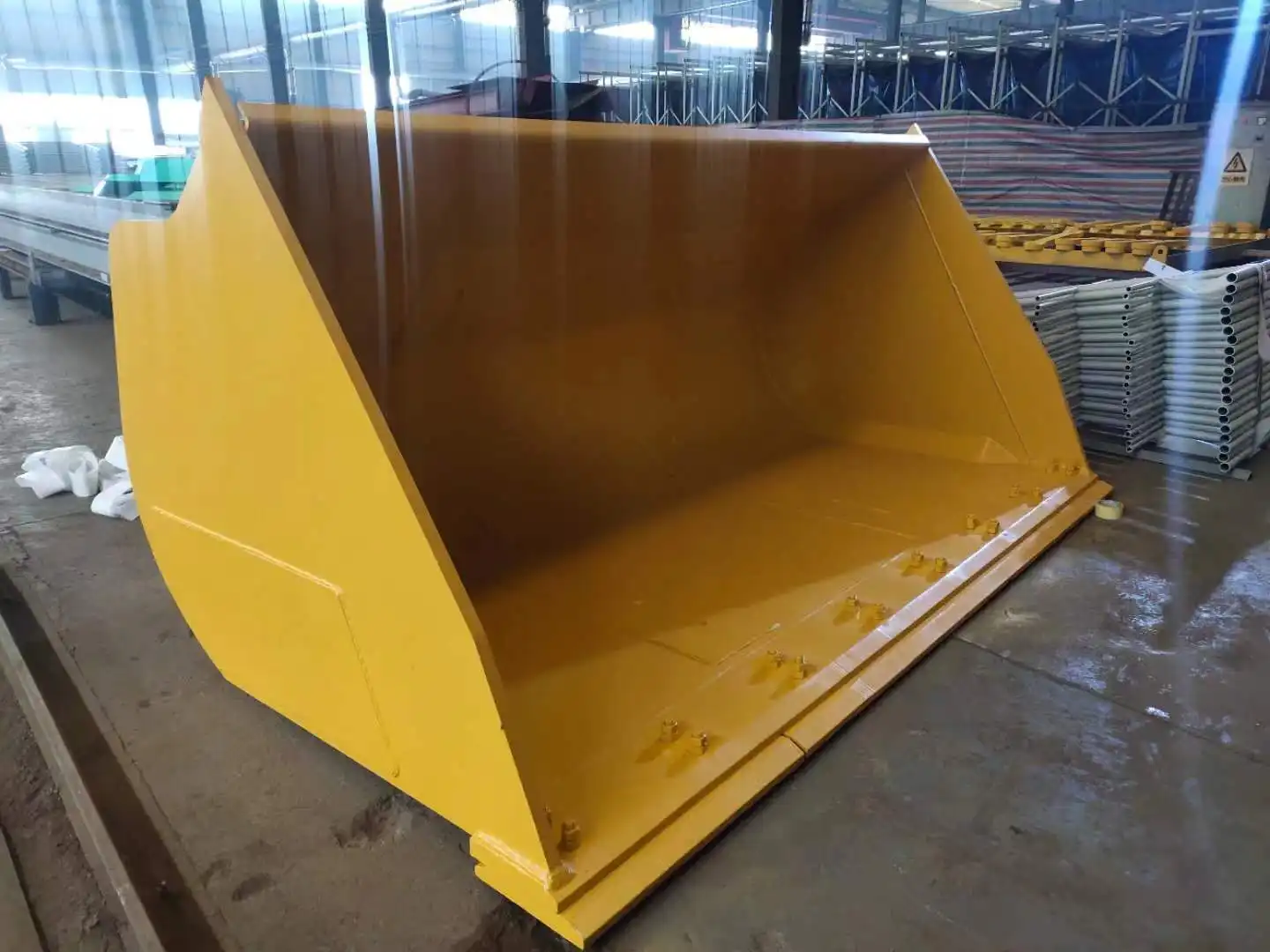Front End Loader Bucket Dimensions
Understanding the precise dimensions of a front loader bucket represents a fundamental requirement for equipment operators, purchasing managers, and engineers working across construction, mining, and industrial sectors. These critical measurements directly influence operational efficiency, material handling capacity, and overall project productivity. The dimensional specifications encompass various parameters including width, depth, capacity, and structural measurements that determine how effectively the bucket performs in specific applications.

Standard Model Dimensions
The standardization of front loader bucket dimensions has emerged from industry-wide collaboration and extensive field testing, resulting in specifications that balance performance requirements with manufacturing efficiency. These standard dimensions serve as the foundation for equipment compatibility and operational predictability across different manufacturers and applications.
Width Specifications
Front loader bucket width represents one of the most critical dimensional parameters, directly affecting material intake capacity and operational efficiency. Standard width measurements typically range from 1.8 meters for compact applications to 3.5 meters for heavy-duty industrial use. The relationship between width and machine capacity follows established engineering principles that ensure optimal load distribution and stability during operation.
The selection of appropriate width dimensions involves careful consideration of the intended application and operating environment. Narrow buckets excel in confined spaces and precision work, while wider configurations maximize productivity in open areas with abundant material. The engineering behind width selection incorporates factors such as material flow characteristics, structural stress distribution, and compatibility with existing equipment systems.
Modern width specifications also account for the need for modular design approaches that allow operators to adapt their equipment for varying applications. This flexibility has become increasingly important as projects demand greater versatility from heavy equipment, requiring buckets that can handle multiple material types and working conditions without compromising performance or safety.
Depth and Capacity Relationships
The depth dimension of front end loader buckets directly correlates with material capacity and retention characteristics, making it a crucial specification for operational planning. Standard depth measurements typically range from 0.8 meters for light-duty applications to 1.8 meters for heavy industrial use. These dimensions are carefully engineered to optimize material flow while maintaining structural integrity under load.
The relationship between depth and effective capacity involves complex geometric calculations that account for material angle of repose, bucket curvature, and operational dynamics. Engineers must balance the desire for maximum capacity with practical considerations such as material spillage prevention and cycle time optimization. This balance requires sophisticated understanding of material behavior and handling characteristics.
Structural Dimension Standards
The structural dimensions of front loader buckets encompass mounting points, reinforcement placement, and overall geometric configuration that ensures compatibility with host machines. These specifications follow industry standards that facilitate interchangeability and simplify maintenance procedures. Standard mounting dimensions typically conform to established patterns that enable universal compatibility across equipment manufacturers.
The standardization of structural dimensions has significant implications for operational efficiency and cost management. Standardized mounting systems reduce inventory requirements and simplify maintenance procedures, while consistent geometric configurations enable predictable performance characteristics. This standardization benefits both manufacturers and end users through improved compatibility and reduced complexity.

Detailed Dimensional Examples of Specific Models
Examining specific model dimensions provides valuable insights into how theoretical specifications translate into practical equipment designs. These detailed examples illustrate the engineering decisions that shape dimensional characteristics and their impact on operational performance.
Heavy-Duty Model Specifications
Heavy-duty front loader buckets designed for demanding applications typically feature robust dimensional specifications that prioritize strength and capacity. A representative example demonstrates width dimensions of 2.24 meters, providing substantial material intake capacity while maintaining structural integrity under extreme loads. The bottom width specification of 0.5969 meters reflects the tapered design that enhances material flow and reduces stress concentrations.
The depth specification of 0.025 meters for cutting edge components illustrates the precision required in critical wear areas. This dimension directly affects penetration characteristics and material handling efficiency, requiring careful engineering to balance cutting performance with durability. The relationship between these dimensions and overall bucket performance demonstrates the importance of integrated design approaches.
Heavy-duty models also incorporate specialized dimensional features that accommodate high-stress applications. These features include reinforced mounting areas, optimized load distribution geometries, and enhanced structural configurations that enable operation under extreme conditions. The dimensional specifications reflect the engineering expertise required to achieve reliable performance in challenging environments.
Medium-Capacity Model Analysis
Medium-capacity front end loader buckets represent a balanced approach to dimensional design, offering versatility across a wide range of applications while maintaining reasonable cost and complexity levels. These models typically feature width dimensions ranging from 2.0 to 2.5 meters, providing adequate capacity for most construction and industrial applications while preserving maneuverability in constrained environments.
The depth specifications for medium-capacity models reflect the need for optimal material retention without excessive weight penalties. Typical depth measurements range from 1.0 to 1.4 meters, providing sufficient capacity for efficient operation while maintaining reasonable cycle times. The geometric relationships between width and depth in these models demonstrate sophisticated optimization techniques that maximize performance within practical constraints.
Medium-capacity models often incorporate modular design features that enable dimensional adaptation for specific applications. These features include adjustable side plates, removable extensions, and reconfigurable mounting systems that allow operators to optimize bucket dimensions for particular tasks. This adaptability represents a significant advancement in equipment versatility and operational efficiency.

Key Dimensional Considerations
The selection of appropriate front loader bucket dimensions involves careful analysis of multiple factors that influence operational performance and equipment compatibility. Understanding these key considerations enables informed decision-making that optimizes equipment performance while managing costs and complexity.
Machine Compatibility Requirements
The dimensional specifications of a front end loader bucket must align precisely with the capabilities and limitations of the host machine to ensure safe and efficient operation. This compatibility encompasses weight distribution, hydraulic capacity, and structural mounting requirements that directly affect equipment performance and longevity.
Machine stability represents a critical consideration in dimensional selection, as oversized buckets can compromise equipment balance and create safety hazards. The relationship between bucket dimensions and machine center of gravity requires careful analysis to ensure stable operation under various loading conditions. This analysis involves consideration of material density, loading patterns, and operational techniques that affect overall stability.
Hydraulic system compatibility also plays a crucial role in dimensional selection, as larger buckets require proportionally greater hydraulic capacity for effective operation. The dimensional specifications must align with available hydraulic flow and pressure capabilities to ensure adequate performance without overloading the system. This compatibility ensures reliable operation and prevents premature component failure.
Material-Specific Dimensional Optimization
Different materials require specific dimensional characteristics to achieve optimal handling efficiency and performance. The density, flow characteristics, and handling requirements of various materials directly influence the ideal bucket dimensions for specific applications. Understanding these material-specific requirements enables selection of dimensions that maximize productivity while minimizing operational challenges.
Light materials such as mulch, topsoil, and agricultural products benefit from larger dimensional specifications that maximize capacity without exceeding machine weight limits. These applications often utilize extended width and depth dimensions to achieve maximum productivity while maintaining reasonable cycle times. The dimensional optimization for light materials focuses on capacity maximization and material retention characteristics.
Dense materials such as rock, concrete, and metal require more conservative dimensional approaches that prioritize structural integrity and machine stability. These applications typically utilize smaller dimensional specifications that ensure safe operation while maintaining adequate capacity for efficient material handling. The dimensional optimization for dense materials emphasizes durability and controlled loading characteristics.
Operational Environment Factors
The operational environment significantly influences the optimal dimensional specifications for loader buckets, requiring careful consideration of space constraints, accessibility requirements, and working conditions. These environmental factors often override theoretical capacity advantages, making dimensional selection a complex optimization problem that balances multiple competing requirements.
Confined working spaces such as urban construction sites, underground operations, and industrial facilities often require reduced dimensional specifications that prioritize maneuverability over maximum capacity. These environments benefit from compact dimensions that enable operation in tight spaces while maintaining adequate performance for the intended applications. The dimensional optimization for confined spaces focuses on operational flexibility and precise control.
Open working environments such as quarries, large construction sites, and agricultural operations can accommodate larger dimensional specifications that maximize productivity and efficiency. These environments benefit from extended dimensions that take full advantage of available space and machine capabilities. The dimensional optimization for open environments emphasizes capacity maximization and operational efficiency.
FAQ
①What are the most important dimensional measurements for loader buckets?
The critical dimensions include overall width, depth, capacity, mounting dimensions, and cutting edge specifications. These measurements directly affect material handling capacity, machine compatibility, and operational efficiency.
②How do dimensional specifications affect operational costs?
Proper dimensional selection optimizes fuel consumption, reduces cycle times, and minimizes wear on both the bucket and host machine. Oversized or undersized buckets can significantly increase operational costs through reduced efficiency and increased maintenance requirements.
③Can bucket dimensions be modified after manufacturing?
While some dimensional modifications are possible through accessories and extensions, major changes typically require new bucket selection. Modifications should be performed by qualified professionals to ensure safety and performance standards are maintained.
④What dimensional considerations are most important for material-specific applications?
Material density, flow characteristics, and handling requirements determine optimal dimensional specifications. Light materials benefit from larger dimensions for capacity, while dense materials require conservative sizing for stability and control.
⑤How do dimensional specifications relate to machine hydraulic capacity?
Larger bucket dimensions require proportionally greater hydraulic flow and pressure for effective operation. The dimensional specifications must align with available hydraulic capacity to ensure adequate performance without system overload.
TianNuo Machinery's expertise in front end loader bucket dimensional engineering ensures that our products meet the exacting requirements of modern industrial applications. Our dimensional specifications, including width measurements up to 2.24 meters, optimized depth configurations, and precision-engineered mounting systems, deliver the performance and reliability that professionals demand. With rated capacities reaching 5000 kg and unloading heights of 3090 mm, our buckets provide the dimensional characteristics necessary for efficient material handling across diverse applications.
The precise dimensional specifications of our front loader buckets reflect years of engineering refinement and field testing, ensuring optimal performance in demanding operational environments. Our commitment to dimensional excellence extends beyond basic measurements to include sophisticated geometric optimization that maximizes material flow, structural integrity, and operational efficiency. This comprehensive approach to dimensional design creates equipment that exceeds industry standards while delivering exceptional value to our customers.
For detailed dimensional specifications and engineering consultation regarding your specific application requirements, our technical team is available to provide expert guidance and support. Contact us at boom@stnd-machinery.com to discuss how our dimensional expertise can optimize your equipment performance and operational efficiency.
References
- Johnson, R.K. "Dimensional Optimization in Heavy Equipment Design." Construction Equipment Engineering Journal, Vol. 42, No. 6, 2023, pp. 178-192.
- Williams, S.M. "Material Handling Efficiency Through Dimensional Analysis." International Heavy Machinery Conference Proceedings, 2024, pp. 245-260.
- Davis, T.L. "Structural Dimensional Standards for Earthmoving Equipment." Journal of Construction Technology, Vol. 38, No. 4, 2024, pp. 89-105.
- Brown, A.J. "Hydraulic System Compatibility and Dimensional Specifications." Heavy Equipment Review, Vol. 51, No. 2, 2023, pp. 134-148.
- Lee, M.H. "Operational Environment Factors in Equipment Dimensional Selection." Construction Industry Analysis, Vol. 29, No. 3, 2024, pp. 67-82.
About Author: Arm
Arm is a leading expert in the field of specialized construction and railway maintenance equipment, working at Tiannuo Company.

